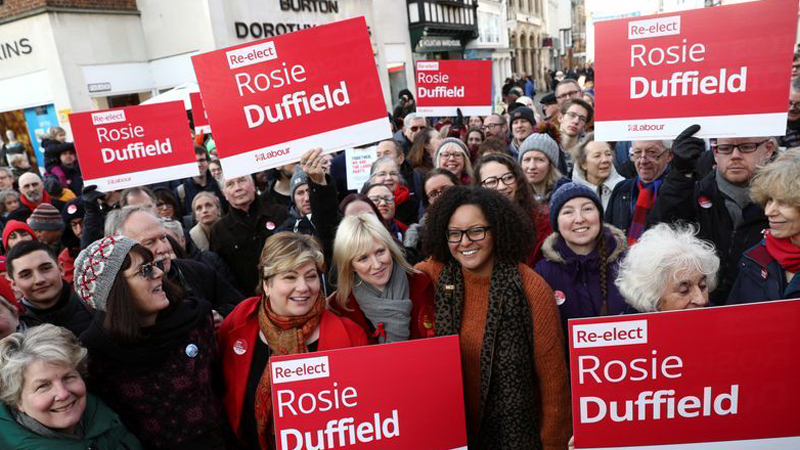
Caroline Hegey and Emma Kelland both want to stop Brexit but will back different parties in the medieval city of Canterbury when they vote in Britain’s election next week.
Hegey, a 64-year-old health service administrator, will back the left-wing Labour Party, which wants a second referendum on Britain’s departure from the European Union.
Kelland, a 42-year-old shop worker, will support the centrist Liberal Democrats who want Brexit cancelled.
The decision by the two big opposition parties to run against each other in Canterbury, rather than field a single candidate, makes it more likely the candidate for Prime Minister Boris Johnson’s Conservatives will be elected on Dec. 12.
It is a scenario that could be repeated in dozens of voting districts, known as constituencies, across the country, increasing Johnson’s chances of gaining a majority in parliament and winning its approval for a deal on leaving the EU.
By contrast, the newly created Brexit Party has agreed not to run against Conservatives in about half the constituencies, including Canterbury, to avoid watering down the pro-Brexit vote. “This election could be decided by very fine margins and I am worried that we are spending time attacking each other when our positions on Brexit are very similar,” Hegey said in Canterbury, close to Britain’s southeastern tip.
She regards a vote for the Liberal Democrats, a much smaller parliamentary force than Labour, as a wasted vote.
But Kelland says she cannot vote for Labour, Britain’s main opposition party, because it has an ambiguous position on Brexit and is led by a long-time eurosceptic, Jeremy Corbyn.
“The Liberal Democrats are the only ‘remain’ vote here. If you vote Labour you don’t know what you are going to get,” she said.
For a graphic on British election opinion polls, click: here
“GET BREXIT DONE”
Johnson’s main campaign slogan is “Get Brexit Done.” He wanted an election because the Conservatives lost their parliamentary majority in the last election in 2017.
Over the past two years, support for remaining in the EU has led in almost every opinion poll. But Labour did not join an initiative intended to unite votes behind a single pro-EU candidate in each constituency.
Only the Liberal Democrats and smaller parties agreed to cooperate, but even their agreement covered around 10% of the 650 constituencies.
The result in close-run constituencies such as Canterbury, home to a gothic cathedral, Norman castle and Roman walls about 90 km (55 miles) southeast of London, could be crucial.
In 2017, Canterbury elected a Labour member of parliament for the first time, with former teaching assistant Rosie Duffield winning 187 more votes than her Conservative rival.
Support for Labour in Canterbury is now 42%, the Conservatives are on 41% and the Liberal Democrats are on 15%, according to a recent opinion poll. Another gave Labour a 4 percentage point lead.
Duffield says a divided vote among remainers “is a risk” but hopes Liberal Democrats will vote for her because of her uncompromising support for remaining in the EU. “My position is I am the biggest ‘remoaner’ in parliament,” she told Reuters, a phrase used to describe someone outraged and frustrated by the outcome of the 2016 referendum.




